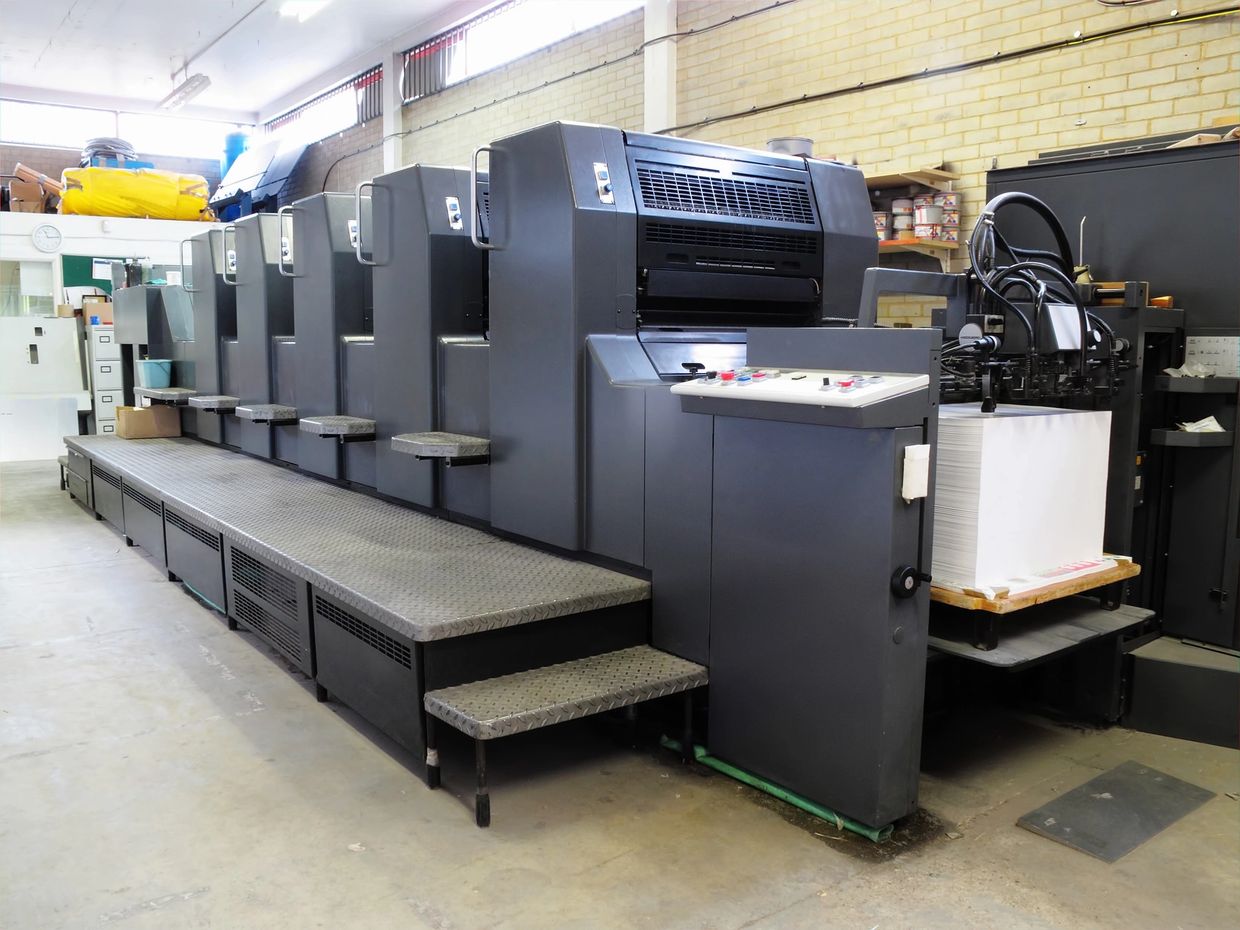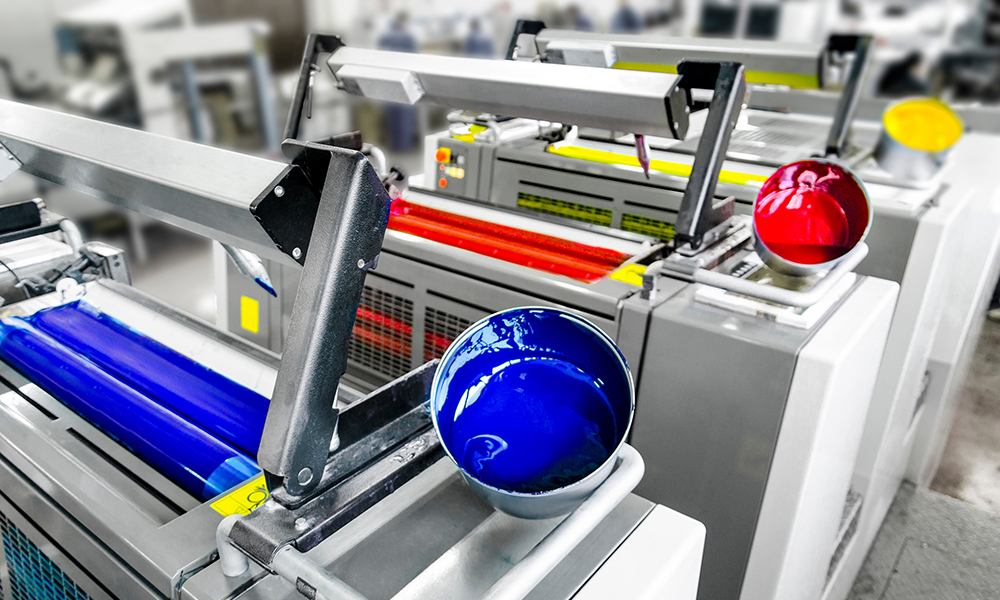The Necessary Guide to Comprehending Litho Printing and Its Applications
Litho printing stands as a significant method in the printing industry, rooted in the principles of oil and water repulsion. This strategy not just provides top notch images however additionally deals with numerous industrial needs. Its applications range from advertising materials to product packaging, showcasing its flexibility. As the industry adapts to new technologies, the evolution of litho printing increases concerns concerning its future and importance in a digital landscape. What exists in advance for this withstanding method?

What Is Litho Printing?
Litho printing, a widely utilized printing strategy, depends on the principle of oil and water repulsion. This approach utilizes a level printing surface area, usually a steel plate, which is dealt with to guarantee that the image locations are receptive to oil-based inks while the non-image locations repel them. The procedure starts with the creation of a picture on the plate, commonly through drawing or photo ways. As soon as the picture is prepared, the plate is moistened with water, adhered to by the application of ink. The ink sticks just to the image areas, enabling accurate recreation of graphics and text. Litho printing is preferred for its capability to produce high-quality prints with fine detail and dynamic colors. It is frequently used in commercial applications, consisting of newspapers, magazines, and product packaging, showcasing its versatility and performance in fulfilling the needs of modern printing.
The Background of Lithography
Although lithography is a modern printing staple, its origins map back to the late 18th century when German playwright Alois Senefelder invented the technique in 1796. Originally established as a technique for recreating messages and images, lithography made use of a flat rock surface to create prints via a chemical process. Senefelder's advancement permitted better adaptability and artistic expression contrasted to previous printing methods.By the 19th century, lithography gained widespread acceptance, becoming a preferred selection among musicians and authors. It enabled the mass manufacturing of images, maps, and posters, especially impacting the printing market. The strategy further evolved with the introduction of lithographic presses, boosting effectiveness and quality.As the industrial change proceeded, lithography adjusted to satisfy the needs of industrial printing, leading the way for modern applications. Today, it continues to be an essential technique in different sectors, including publishing, product packaging, and fine art reproduction.
Just How Litho Printing Functions
A crucial function of litho printing is its reliance on the principle of oil and water repulsion - litho printing. In this process, pictures are transferred from a flat surface, typically a steel or polymer plate, to paper. Home plate is dealt with so that the locations intended for printing attract ink, while the non-image locations repel it as a result of their affinity for water. The printing starts by wetting home plate with water, which adheres to the non-image locations. Ultimately, an oil-based ink is used, sticking just to the designated image areas.When home plate enters into contact with the substrate, the ink is transferred, creating a print. The litho printing procedure is capable of producing high-grade images with fine detail. It is often used for automation as a result of its efficiency and uniformity, making it a preferred method for industrial printing applications
Benefits of Litho Printing
One remarkable advantage of litho printing is its capacity to create high-grade pictures continually, making it a suitable option for industrial tasks. This printing approach uses a flat printing plate, making certain even ink distribution and sharp information. Litho printing is additionally renowned for its shade precision, making it possible for vivid and true-to-life reproductions, which is crucial for branding materials.Moreover, it supports a wide range of substrates, consisting of paper, cardboard, and even certain plastics, improving its convenience. The procedure is economical for huge runs, as economic climates of scale minimize per-unit prices. On top of that, litho printing has a fast turnaround time, enabling reliable production schedules.Its longevity likewise indicates that printed products stand up to fading, guaranteeing that the end product preserves its visual appeal gradually. Overall, these advantages make litho printing a recommended selection across numerous sectors, contributing to its enduring appeal.
Applications of Litho Printing in Organization
As businesses increasingly look for dependable and top notch printing services, litho printing arises as an essential player in different applications. This technique is particularly preferred for producing advertising and marketing products such as pamphlets, flyers, and magazines, many thanks to its capacity to provide vibrant shades and sharp images. On top of that, litho printing is often used for product packaging services, permitting companies to develop appealing tags and boxes that improve product appeal.In the industry of corporate identification, litho printing contributes in generating specialist stationery, company cards, and advertising product, which assist enhance brand name acknowledgment. In addition, it is widely made use of in the publishing industry for published products such as books and magazines, where consistent top quality is paramount. On the whole, litho printing's adaptability and effectiveness make it an essential device for services aiming to connect effectively and develop a strong market presence.
Artistic Utilizes of Litho Printing
Litho printing works as a functional tool in the domain name of printmaking, offering musicians an one-of-a-kind approach to share their creativity. This method enables a wide variety of imaginative applications, from conventional prints to modern interpretations. By checking out the subtleties of litho printing, artists can harness its unique qualities to improve their work.

Printmaking Strategies Review
The creativity of printmaking encompasses a diverse range of strategies, with litho printing sticking out for its distinct approach to photo development. This technique counts on the concept of oil and water repulsion, permitting musicians to attract directly onto a limestone or metal plate with an oily tool. Once prepared, the plate is dampened and inked, transferring the picture onto paper with stress. Litho printing is commemorated for its capacity to create great details and abundant tonal variations, making it a favored option among musicians. In addition, the procedure is versatile, suiting both typical techniques and modern-day adjustments. This adaptability enables litho printing to bridge numerous imaginative styles, improving the printmaking landscape with its distinct qualities and capacities.
Unique Artistic Applications
Checking out the distinct imaginative applications of litho printing reveals its impressive convenience in different innovative fields. Musicians utilize litho printing to create complex layouts and textures, enabling meaningful and detailed jobs. The procedure promotes the recreation of vibrant colors, making it excellent for illustrations and art prints. Many contemporary musicians welcome lithography for its ability to combine standard methods with modern-day concepts, leading to innovative art work. Additionally, litho printing is frequently employed in the manufacturing of minimal version prints, boosting their worth and allure. The tactile high quality of litho prints adds a distinct dimension, bring in enthusiasts and art enthusiasts alike. Overall, litho printing remains a substantial medium for artistic expression, connecting classic methods with contemporary creativity.
The Future of Litho Printing in a Digital World
As the printing sector advances, litho printing faces the obstacle of incorporating electronic modern technologies to stay relevant. Approaches focused on digital integration, along with fads in sustainability and innovation, will form its future - litho printing. Recognizing these characteristics is vital for sector check here stakeholders wanting to adapt to a rapidly changing landscape
Digital Combination Approaches
An expanding variety of litho printing companies are welcoming digital integration techniques to remain affordable in an increasingly electronic landscape. By incorporating digital workflows, these companies can improve processes and enhance performance. This assimilation permits real-time information monitoring and boosted interaction between departments, minimizing turn-around times significantly. Furthermore, electronic devices allow better personalization and customization of published materials, accommodating specific customer demands. Business are additionally adopting hybrid printing services that combine conventional litho methods with digital modern technologies, using adaptability in production. Moreover, leveraging data analytics aids in recognizing market trends and consumer preferences, allowing organizations to make enlightened choices. Overall, digital assimilation is ending up being necessary for litho printing companies intending to innovate and react to evolving market needs.
Sustainability and Advancement Patterns

Regularly Asked Inquiries
What Materials Are Typically Utilized in Litho Printing?
The products generally made use of in litho printing consist of aluminum plates, ink, water, and paper. official source Each element plays an essential duty in the printing process, making sure top notch picture reproduction and efficient transfer of ink onto the substratum.
Exactly How Does Litho Printing Compare to Digital Printing?
Litho printing supplies remarkable shade uniformity and quality for huge runs, while digital printing masters brief runs and personalization. Each method has distinctive benefits, accommodating various requirements based upon production range and More Bonuses cost-efficiency.
What Is the Normal Turn-around Time for Litho Printing Projects?
The normal turnaround time for litho printing jobs varies, usually ranging from a few days to numerous weeks. Variables affecting this duration include project complexity, quantity, and needed ending up processes, affecting general manufacturing routines.
Can Litho Printing Accommodate Custom Sizes and Formats?
Litho printing can certainly accommodate personalized dimensions and styles, allowing for flexibility in design. This adaptability enables clients to attain unique print end results customized to their specific requirements, enhancing the total efficiency of their projects.
What Are the Ecological Effects of Litho Printing?
The environmental impacts of litho printing include source intake, chemical usage, and waste generation. Improvements in sustainable techniques and environmentally friendly materials are gradually lowering these negative results, promoting an extra environmentally accountable method to printing.